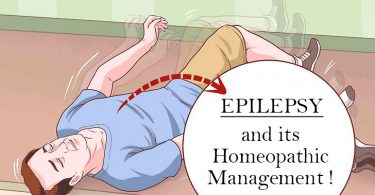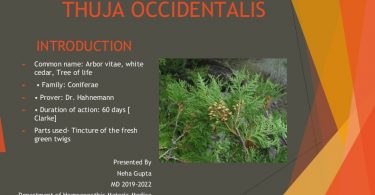Abstract
Polycystic ovarian syndrome (PCOS) is a “multifactorial” disorder suspected in patients with irregular menses and clinical signs of hyperandrogenism such as acne, seborrhoea, hirsutism, infertility and alopecia. Polycystic ovarian syndrome is one of the most common endocrinopathy affecting women. According to Homoeopathic principles, patient is to be treated as a whole not on symptoms based. So, in polycystic ovarian syndrome our objective of treatment must be solely based on individualization and symptom totality along with proper diet and regimen and regular exercise. This article focuses on the understanding of the background, pathophysiology, clinical features, homoeopathic miasmatic interference and efficient homoeopathic management of PCOS.
Keywords
Polycystic ovarian syndrome, Anovulation, irregular menses, hirsutism, insulin resistance (IR), infertility, obesity, hyperandrogenism, hormone imbalance, diabetes mellitus, metabolic syndrome, testosterone, SHBG, androgen, LH, FSH, prolactin, TSH, stress, homoeopathy.
Abbreviations
Polycystic ovarian syndrome (PCOS), insulin resistance (IR), sex hormone binding globulin (SHBG), luteinizing hormone (LH), follicle stimulating hormone (FSH), thyroid stimulating hormone (TSH), ultrasonography (USG), cardiovascular system (CVS), carcinoma (CA)
Introduction
In 1935, Irving F. Stein and Michael L. Leventhal first described a symptom complex associated with anovulation. Both gynaecologists were born in Chicago, both were graduates of Rush Medical College, and both spent their entire professional careers at Michael Reese Hospital. Stein and Leventhal described 7 patients (4 of whom were obese) with amenorrhea, hirsutism, and enlarged, polycystic ovaries. They reported the results of bilateral wedge resection, removing one-half to three-fourths of each ovary; all 7 patients resumed regular menses, and 2 became pregnant. Stein and Leventhal developed the wedge resection after they observed that several of their amenorrhoeic patients menstruated after ovarian biopsies. They reasoned that the thickened tunic was preventing follicles from reaching the surface of the ovary. 1
It is better to consider this problem as one of persistent anovulation with a spectrum of aetiologies and clinical manifestations, that now includes insulin resistance and hyperinsulinemia, as well as hyperandrogenism. The characteristic polycystic ovary emerges when a state of anovulation persists for any length of time. The polycystic ovary is the result of a functional derangement, not a specific central or local defect.
Polycystic ovarian syndrome is considered to be not only a reproductive endocrinopathy, but also a metabolic disorder, and its morbidity may include hyperinsulinemia, insulin resistance, early onset of type 2 diabetes mellitus, and dyslipidaemia. Obesity is a prominent feature of polycystic ovarian syndrome, occurring in 40-50% of polycystic ovarian syndrome patients.2
Mind-body experts Louise Hay, Deb Shapiro and Christiane Northrup all agree that the female reproductive system is the centre for creativity. When the ovaries are affected, there can often be an internal conflict around both the creation of life, and the creation of new pathways for the self.3
Definition
The polycystic ovary syndrome (PCOS) is a heterogeneous collection of signs and symptoms that gathered together form a spectrum of a disorder with a mild presentation in some, while in others a severe disturbance of reproductive, endocrine and metabolic function.
Key features include menstrual cycle disturbance, hyperandrogenism and obesity. Most of the criteria used for diagnosing POLYCYSTIC OVARIAN SYNDROME are continuous traits, such as, degree of hirsutism, level of circulating androgens, extent of menstrual irregularity, and ovarian volume and morphology. POLYCYSTIC OVARIAN SYNDROME runs in families and affects approximately 50% of first-degree relatives. 4
Aetiology of PCOS5
| Genetic causes | Endocrinal causes | Lifestyle causes | Iatrogenic causes |
| Women with PCOS have strong family history with significant hereditary component and is often transmitted from mother to daughter. | Neurotransmitters produced in higher centre of brain are passed on to hypothalamus and to pituitary through hypothalamic – pituitary axis Psychological causes i.e mental shock, grief, mortification , vexation, anger, suppression of emotion, dreams fears delusions that affect mind. Psychoneuroimmunology and Stress Insulin resistance theory | Obesity can aggravate PCOS because fatty tissues are hormonally active and they produce oestrogen which disrupts ovulation. Lack of Physical activity. Type of food- oily, starchy, spicy, fried | Drug diseases which have oestrogenic effect on ovaries. |
Prevalence
The estimated prevalence in India ranged from 3.7 to 22.5 per cent. The prevalence of POLYCYSTIC OVARIAN SYNDROME was found to be higher or lower depending on the criteria used, which might be the obvious reason for the discrepancy in the prevalence rates among the studies. Considering the vast diversity in the population of India, large-scale community-based studies using internationally accepted criteria, in various geographic regions, are necessary to shed light on the actual prevalence of this disorder.6
The prevalence of POLYCYSTIC OVARIAN SYNDROME is increased in overweight and obese women when compared to their lean counterparts. The prevalence rates of POLYCYSTIC OVARIAN SYNDROME in underweight, normal-weight, overweight, and obese women are 8.2, 9.8, 9.9, and 9.0%, respectively. Prevalence rates reaches 12.4 and 11.5% in women with BMI 35-40 kg/m2 and greater than 40 kg/m2.2
CLINICAL FEATURES
• Irregular periods or amenorrhoea
• Infertility, difficulty conceiving and a tendency to miscarriage
• Mood swings, low libido and depression
• Weight gain particularly around the middle, and difficulty losing weight
• Food cravings
• Thinning of the hair or hair loss on the head
• Hirsutism – excess hair on face, breasts, inside of the thighs or nipples
• Skin tags
• Acanthosis nigricans – the skin becomes discoloured and may look ‘dirty’ on the arms, around the neck or under the breasts.3
| Manifestation of ovarian dysfunction | Manifestation of hyperandrogenism | Associated conditions |
| Oligomenorrhoea Amenorrhoea USG-Polycystic ovaries | Hirsutism Acne Alopecia Seborrhoea Acanthosis nigricans (excess circulating antigens) | Obesity Insulin resistance Impaired fasting glucose Type 2 diabetes mellitus Dyslipidaemia Metabolic syndrome Mood disorders Arterial hypertension |
Clinical manifestations and associated conditions.5
Diagnosis
| NIH 1990 | Rotterdam 2003 | Androgen Excess Society 2006 |
| Must include Chronic anovulation Clinical and/or biochemical signs of hyperandrogenism | Two of the following three- Oligo / anovulationClinical and/or Biochemical signs or hyperandrogenismPolycystic ovaries on USG | Must include Ovarian dysfunction Oligo/anovulationPolycystic ovaries on USG Androgen Excess HirsutismHyperandrogenaemia |
Diagnostic criteria for PCOS5
| PCOD7 | PCOS7 |
| More common Most population have it as compared to PCOS | Syndrome — affecting many systems of body Associated with risk- Diabetes, CVS disorder, endometrial CA |
| Have higher no. of follicles/ cyst – in u/s report may also be present early in life— late 20’s , asymptomatic, but discovered incidentally | Many do not have polycystic ovaries as a feature Early in life– teen years –acne, hair growth become evident |
| Emergence of cysts in PCOS may be caused by a variety of reasons such as drugs like nafarelin | Hormonal disorder: production of androgens from the ovary disturbing ovulation |
Investigations and assessment in PCOS
The diagnosis of PCOS is made principally on clinical grounds, supported by ultrasonography and by some of the biochemical investigations. The choice of investigations in PCOS depends primarily on the mode of presentation. Key investigations include testosterone, SHBG, LH, FSH and free androgen index to assess androgen status and prolactin and thyroid stimulating hormone to exclude other disorders. The pelvic ultrasound is done for ovarian morphology and endometrial thickness. An oral glucose tolerance test and lipid profiles are appropriate in all women at diagnosis.7
| Investigation | Significance |
| Total testosterone | >3.6ng/ml significant |
| Androstenedione | Elevated in Ovarian pathology |
| FSH/LH ratio | Normally FSH>3.4 LH. Reversal ratio significant |
| TSH | Hypothyroidism may cause oligo/amenorrhoea |
| DHT | Indicates peripheral conversion of testosterone |
| DHEAs | Elevated in adrenal pathology |
| Prolactin | May be raised in PCOS , but very high levels indicates pituitary tumour |
| Insulin – Fasting | >12 mIU/ml suggestive of insulin resistance |
| Insulin – Post 75g glucose | >25 mIU/ml suggestive of insulin resistance. |
| USG-Pelvis | Volume of atleast one ovary more than 10cc with “string of pearl” appearance. |
| Lipid profile | May be deranged in Metabolic syndrome. |
| 17- Hydroxy Progesterone | Elevated in late onset CAH |
| Blood Sugar- Fasting | May be deranged in Metabolic syndrome. |
| Blood Sugar- Post 75g glucose | May be deranged in Metabolic syndrome. |
| 24hr Urine Free Cortisol | Mild elevations can be seen in PCOS. |
PCOS investigation and significance7
Homoeopathic approach
Polycystic ovarian syndrome is a disease of multifactorial origin, thus homoeopathic treatment can serve best to give cure. But majority of homoeopaths face difficulties in finding the dominant miasm and hence the treatment given doesn’t lead to complete cure.
Miasmatic cause: In § 5, Dr Hahnemann has mentioned, “the most significant points in the whole history of the chronic disease, to enable him to discover its fundamental cause, which is generally due to a chronic miasm. In these investigations, the ascertainable physical constitution of the patient (especially when the disease is chronic), his moral and intellectual character, his occupation, mode of living and habits, his social and domestic relations, his age, sexual function, etc. are to be taken into consideration.”
As explained in THE CHRONIC DISEASES by Samuel Hahnemann-
The original remedy sought for must be also of a miasmatic, chronic nature clearly perceivable from circumstances, that after it has once advanced and developed to a certain degree it can never be removed by the strength of any robust constitution, it can never overcome by the most wholesome diet and order of life, nor will it die out of itself. All the chronic disease of mankind, even those left to themselves, not aggravated by a perverted treatment, show, as said, such a constancy and perseverance, that as soon as they have developed and have not been thoroughly healed by the medical art, they ever more increase with the years, and during the whole man’s lifetime; and they cannot be diminished by the strength belonging even to the most robust constitution. Still less can they be overcome and extinguished. Thus, they never pass away of themselves, but increase and are aggravated even till death. They must therefore all have for their origin and foundation constant chronic miasms, whereby their parasitical existence in the human organism is enabled to continually rise and grow. 8
Homoeopathic therapeutics
Apis mellifica– PCOS with stinging pains. The stinging pains are more likely to be accompanied by tenderness over abdomen and uterine region. The patient is unable to tolerate heat and feels worse in summers. The right side is more likely to be affected. There may even be oedematous swellings of various body parts.9
Pulsatilla nigricans– PCOD with scanty and late menses. The patient is usually thirstless and takes little water. The general temperament of the patient is mild, gentle and yielding. There are changeable moods in which patient is happy at one moment and the very next moment, she becomes irritable. Pulsatilla is often suited to young girls in whom the problem starts at puberty itself.10
Sepia –When the patient has bearing down pains from the back and abdomen, Sepia is one of the best homeopathic remedies for PCOS. There is a feeling of a “ball” like sensation in the inner parts. The pelvic organs seem relaxed. The menses are irregular. In some cases, they are too late and scanty while in others they are early and profuse. There may be yellowish or greenish leucorrhoea. The mental temperament of the patient is such that she is irritable and indifferent. She cares the least even for her family members.10
Lachesis mutus – PCOD with aversion to tight clothes. Most of the problems are on the left side only. The menses are too short and flow is feeble. There are pains in the abdomen which are relieved after the flow starts. There is great loquacity in the patient and is often seen jumping from topic to topic. Jealousy is another prominent symptom present in such patients. 10
Graphites– PCOS with constipation. The patient is often of a stout build or is fat. She cannot tolerate cold and is always feeling chilly. The menses are too late and are pale and scanty. There is tearing pain in the stomach region. Hardness may be felt in the ovarian region.10
Conclusion
As PCOS is a condition of multisystem involvement, a multidisciplinary approach is pivotal to combat and overcome it. Our dynamic remedies arouse the individuals own immunity which fights the syndrome as an entity dynamically and re- establishes the health and harmony. Thus, in a PCOS suffering woman, a dynamic homoeopathic similimum clears hormonal imbalance, regularises natural ovulation, restores menstrual normalcy, handles obesity, manages infertility and treats as a whole positively.
References:
1. Leon Speroff, Robert H. Glass, Nathan G. Kase, 1999 Lippincott Williams & Wilkins, Clinical Gynaecologic Endocrinology and Infertility 6th ed:
2. Ahmadi A, Akbarzadeh M, Mohammadi F, Akbari M, Jafari B, Tolide-Ie HR. Anthropometric characteristics and dietary pattern of women with polycystic ovary syndrome. Indian J Endocr Metab 2013; 17:672-6
3. Williams Keri, Polycystic ovaries: Background, causes, www.yumpu.com/en/document/view/32646075/polycystic-ovaries Keri William
4. EDITED BY D. KEITH EDMONDS FRCOG, FRACOG Consultant Obstetrician and Gynaecologist Queen Charlotte’s and Chelsea Hospital Goldhawk Road London, Dewhurst’s Textbook of Obstetrics & Gynaecology UK SEVENTH EDITION
5. Edited by Ash Monga and Stephen Dobbs , Gynaecology by Ten Teachers, 19th Edition
6. Ganie MA, Vasudevan V, Wani IA, Baba MS, Arif T, Rashid A. Epidemiology, pathogenesis, genetics & management of polycystic ovary syndrome in India. Indians J Med Res 2019; 150:333-44
7. Savitha Dr.K., Dynamic Perspectives on Polycystic Ovarian Syndrome
8. Hahnemann Samuel, The Chronic Disease, Their Peculiar Nature and Their Homoeopathic Cure, Noida U.P.: B. Jain Publishers(P) Ltd.; 2018
9. Clarke Dr JH, A dictionary of practical Materia Medica. Vol I, Vol II, Vol III, B. Jain publications
10. Allen Dr JH , Allens’s Keynotes rearranged and classified with leading remedies of Materia Medica and bowel nosodes including reportorial index, B. Jain Publications, 8th Edition.
About the author –
Dr Garima Jindal
(MD-2 SCHOLAR), Department of Organon of Medicine
Sri Guru Nanak Dev Homoeopathic Medical College and Hospital, Ludhiana (Punjab)





